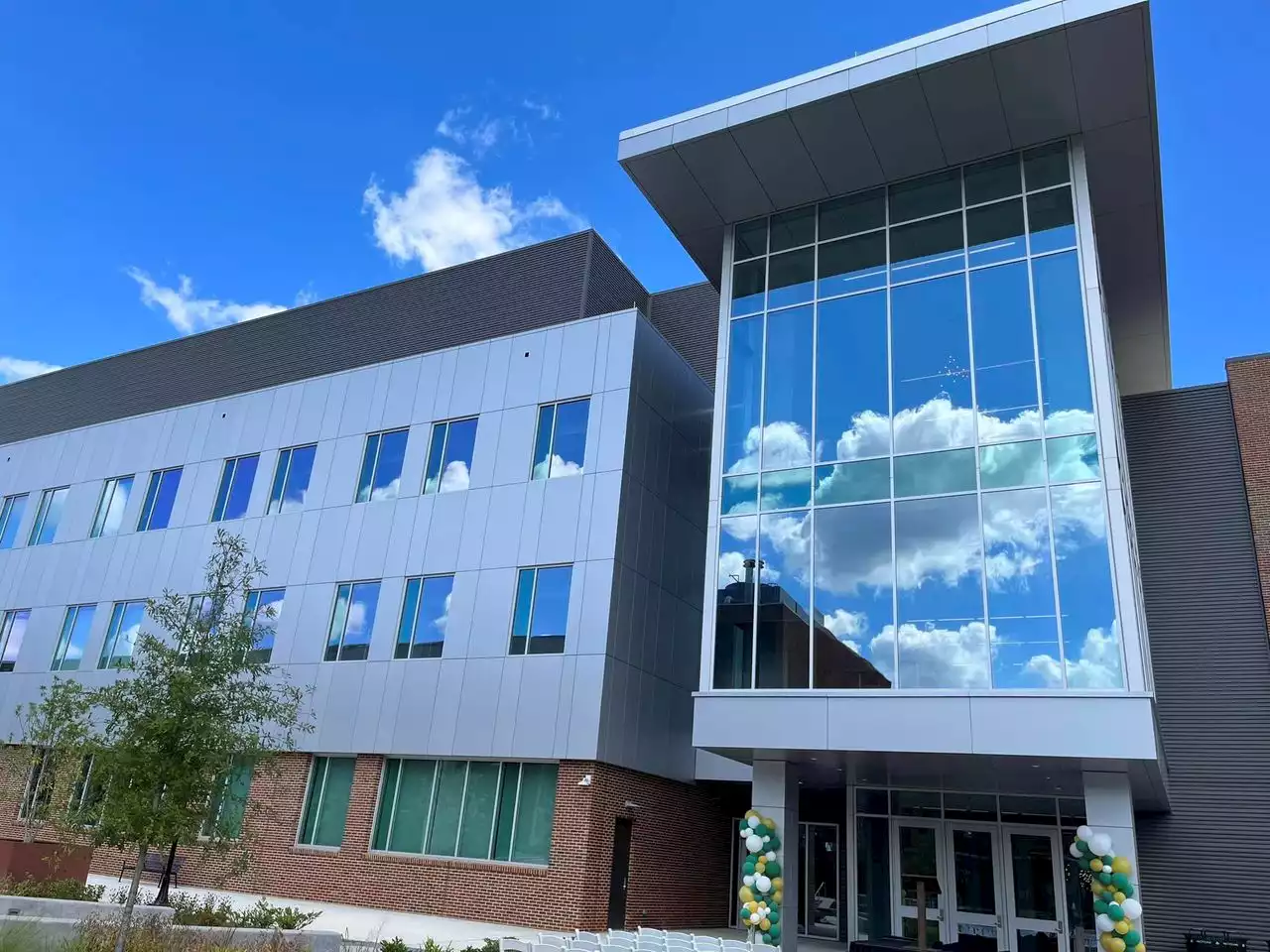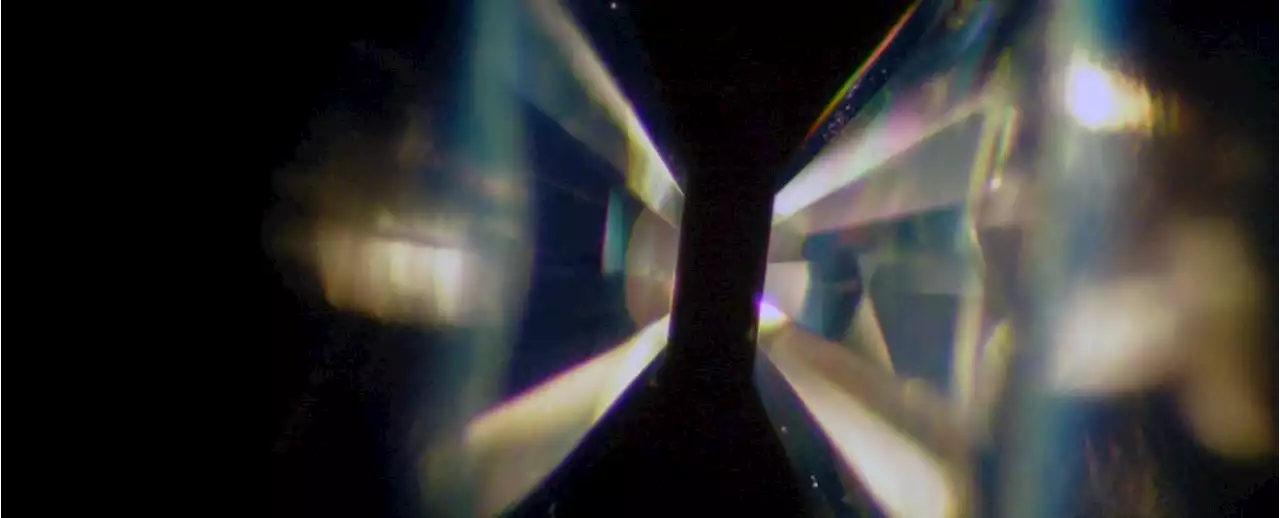Using an anvil made of diamond, physicists have successfully squeezed iron into the form we think it has deep in the center of Earth.
There's just one problem in this quest to understand Earth's core. Here on the surface, in a nice, relatively low atmospheric pressure regime, conditions in the core are difficult to replicate. But we can create high-pressure conditions for brief pulses of time, using diamond anvils and heat.
"We report here the synthesis of ϵ-Fe single crystals in diamond anvil cells and subsequent measurement of single-crystal elastic constants of this phase up to 32 GPa at 300 Kelvin with inelastic X-ray scattering,"frameborder="0″ allow="accelerometer; autoplay; clipboard-write; encrypted-media; gyroscope; picture-in-picture; web-share" allowfullscreen>, or alpha iron.
So, Dewaele and her colleagues approached the problem stepwise. They placed crystals of ferrite in a diamond anvil in a vacuum heater, and increased the pressure to 7 gigapascals and the temperature to 800 Kelvin . This produced an intermediate phase of iron that occurs at high temperatures in atmospheric conditions called, or gamma iron. Austenite has a different structure to ferrite, and the austenite crystals the team made changed into the hexaferrum phase far more smoothly at pressures between 15 and 33 gigapascals at 300 Kelvin.
Then, they used a synchrotron beamline at the European Synchrotron Radiation Facility to probe the hexaferrum and analyze its properties.What we know of Earth's core is largely reconstructed based on seismic data. Acoustic waves created by planetary tremors propagate differently through different materials; this is
Australia Latest News, Australia Headlines
Similar News:You can also read news stories similar to this one that we have collected from other news sources.
 Why Isaac Newton's laws still give physicists a lot to think aboutThe apparent equivalence of gravitational mass to inertial mass is a remarkable and beautiful feature of the cosmos, with a deep implication, says Chanda Prescod-Weinstein
Why Isaac Newton's laws still give physicists a lot to think aboutThe apparent equivalence of gravitational mass to inertial mass is a remarkable and beautiful feature of the cosmos, with a deep implication, says Chanda Prescod-Weinstein
Read more »
 Physicists demonstrate how sound can be transmitted through vacuum -- ScienceDailyA classic movie was once promoted with the punchline: 'In space, no one can hear you scream'. Physicists have now demonstrated, to the contrary, that in certain situations sound can be transmitted strongly across a vacuum region!
Physicists demonstrate how sound can be transmitted through vacuum -- ScienceDailyA classic movie was once promoted with the punchline: 'In space, no one can hear you scream'. Physicists have now demonstrated, to the contrary, that in certain situations sound can be transmitted strongly across a vacuum region!
Read more »
Near Earth Orbit Network (NEON)NOAA’s Near Earth Orbit Network (NEON) Program will develop future low Earth orbit (LEO) environmental satellites. Low and medium Earth observations.
Read more »
 As UAB physicists make diamonds, new $75 million science building shinesUAB opened its $75 million new science building on Thursday, and physicists are already set up to make diamonds in a basement lab.
As UAB physicists make diamonds, new $75 million science building shinesUAB opened its $75 million new science building on Thursday, and physicists are already set up to make diamonds in a basement lab.
Read more »
 Scientists Uncover Source of Unusual Deformation in Earth’s Largest Continental RiftComputer simulations confirm that the African Superplume causes the unusual deformations and rift-parallel seismic anisotropy detected below the East African Rift System. Continental rifting involves a combination of stretching and fracturing that penetrates deep within the Earth, explains geophy
Scientists Uncover Source of Unusual Deformation in Earth’s Largest Continental RiftComputer simulations confirm that the African Superplume causes the unusual deformations and rift-parallel seismic anisotropy detected below the East African Rift System. Continental rifting involves a combination of stretching and fracturing that penetrates deep within the Earth, explains geophy
Read more »
 Q&A: Sustainability in space travel can aid efforts here on EarthDr. Angelo Vermeulen is a space systems researcher at Delft University of Technology in the Netherlands, where he explores advanced concepts for interstellar exploration. Over the past decade, he has collaborated closely with the European Space Agency's (ESA) MELiSSA program, developing concepts for bioregenerative life support systems for space. In such systems, a variety of microorganisms progressively break down human waste and the resulting compounds are harnessed by plants to produce oxygen and food for the crew.
Q&A: Sustainability in space travel can aid efforts here on EarthDr. Angelo Vermeulen is a space systems researcher at Delft University of Technology in the Netherlands, where he explores advanced concepts for interstellar exploration. Over the past decade, he has collaborated closely with the European Space Agency's (ESA) MELiSSA program, developing concepts for bioregenerative life support systems for space. In such systems, a variety of microorganisms progressively break down human waste and the resulting compounds are harnessed by plants to produce oxygen and food for the crew.
Read more »
